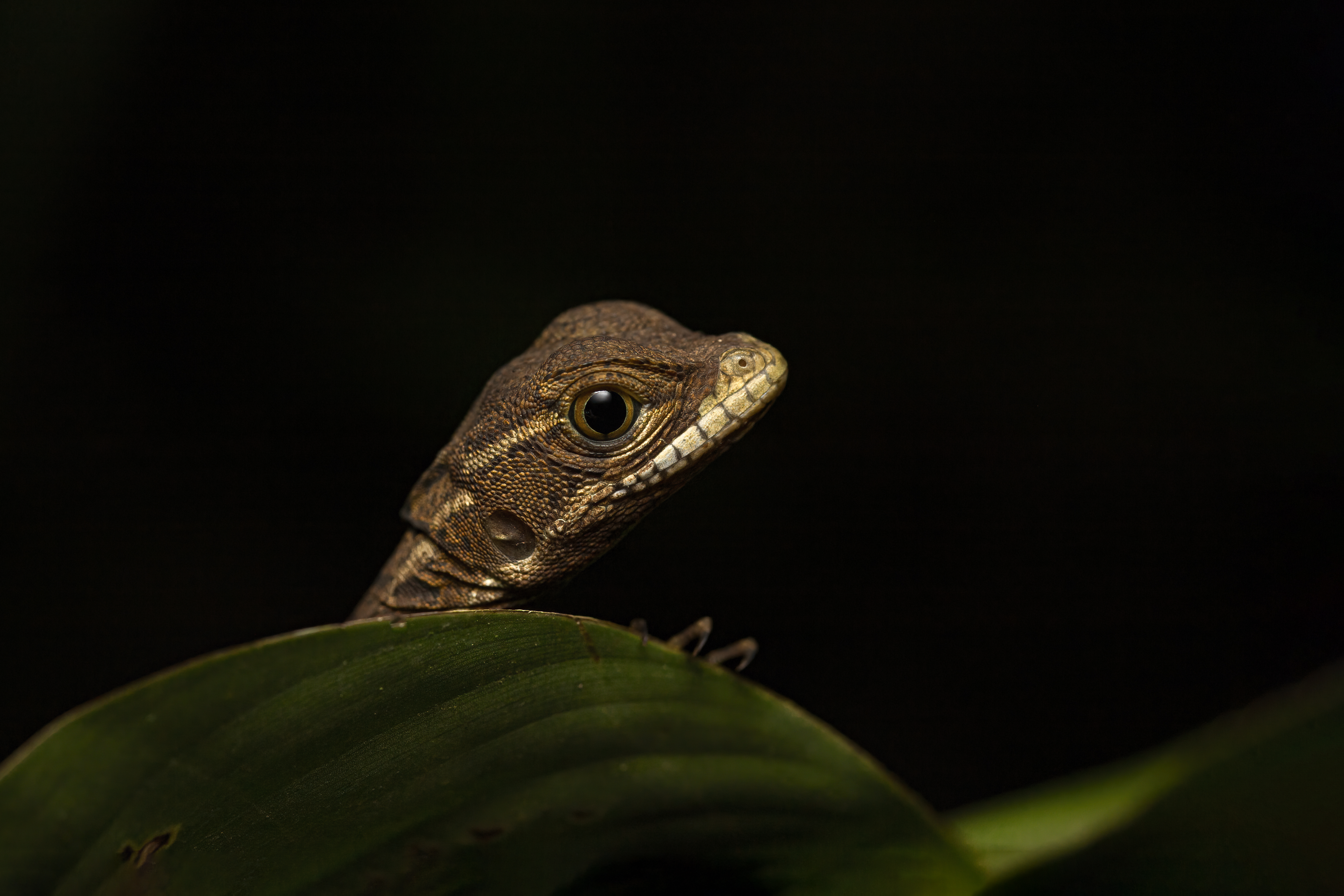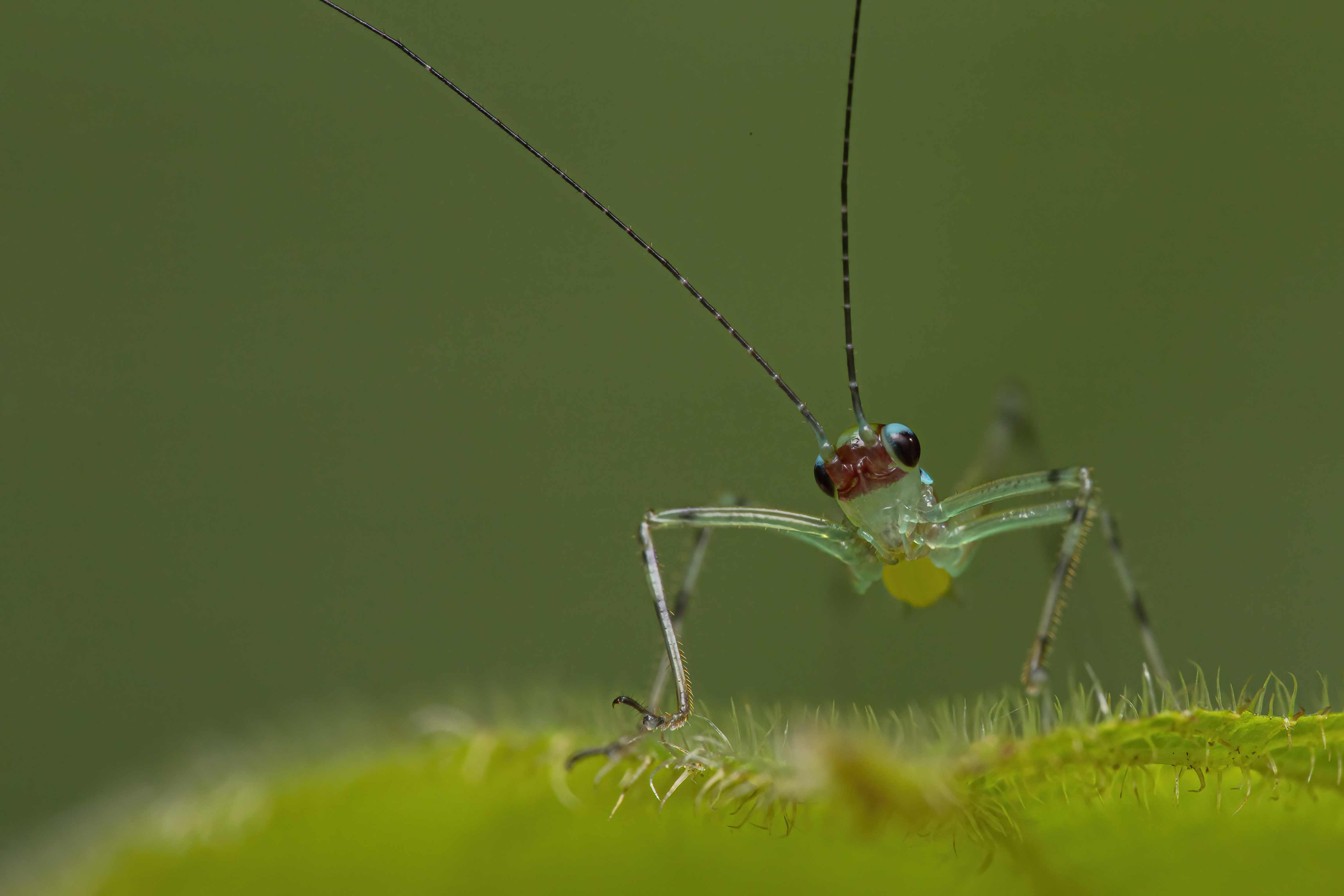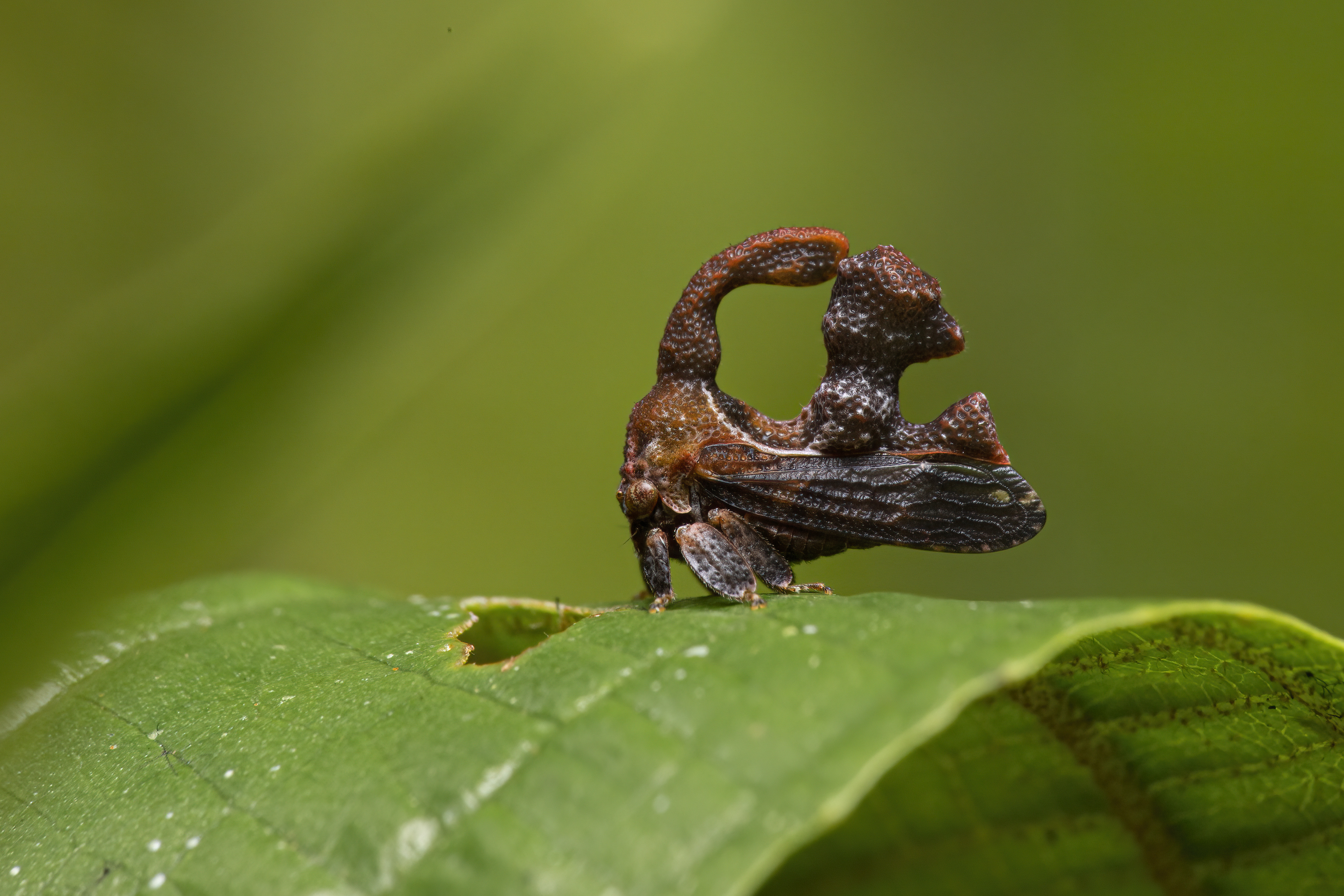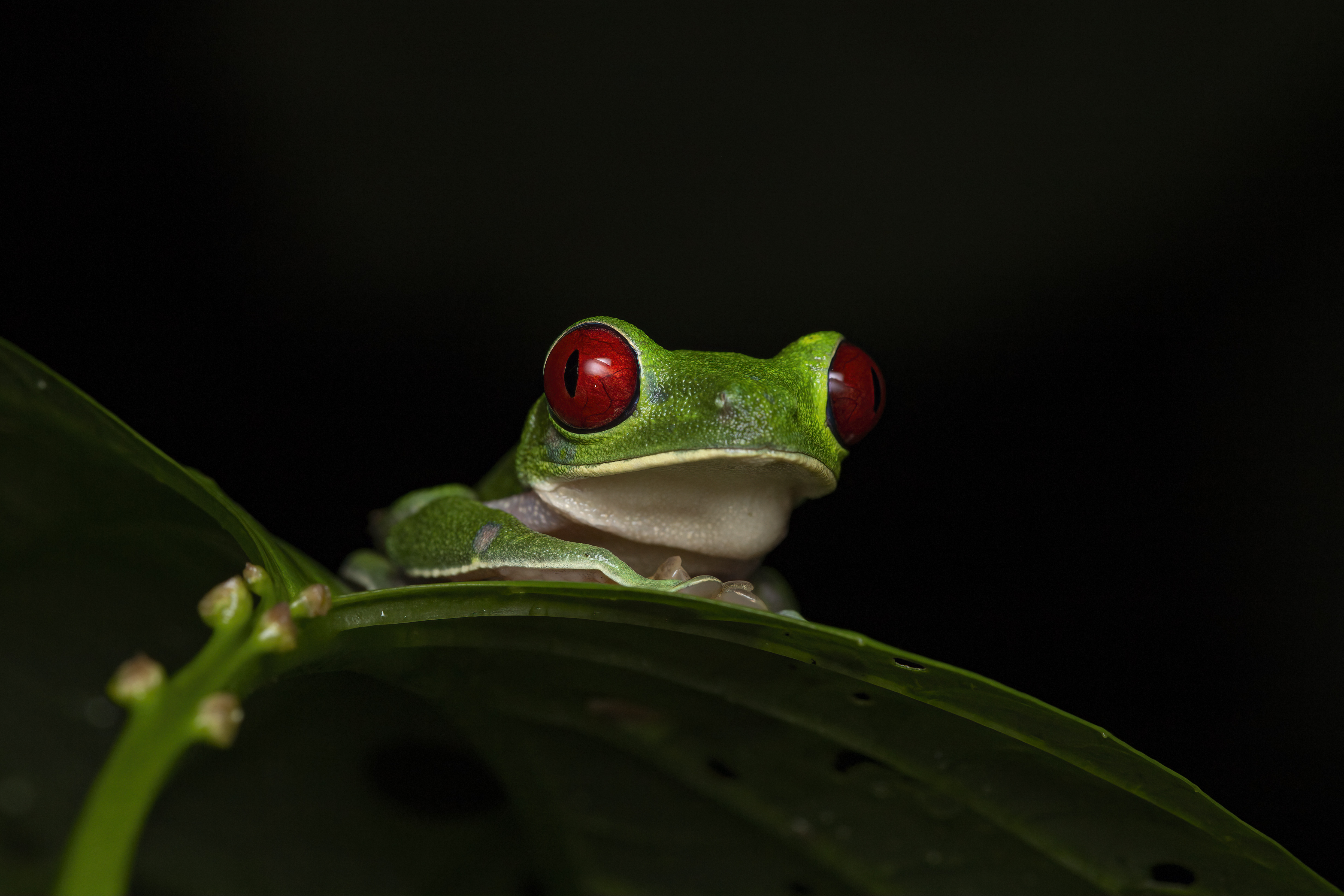
How did you get into photography and what made you choose macro photography?
I discovered photography while I was studying for my second career as a field Naturalist in 2007. First it was a tool to record the animals or plants I was studying in the field. But when I started to shoot, I fell in love with photography and started to learn more and more as a self- taught. At that moment I was studying frogs, so that fact led me to start with macro photography at night, and I realized that macro photography allows us to enter a completely new world that our naked eyes don’ t see. I felt in love with photography even more deeply. My first camera was a Sony Cybershot H2, a bridge camera.
Where do you find inspiration as a photographer?
Nature always inspires me, but not just experiencing it in the field, also learn about natural history, evolution, adaptations, and conservation. All that knowledge makes me want to explore different places to find the examples of every behavior and adaptation and even more exciting for me is to find a new species from among those that are not described by science. Something that in the field of entomology is common because the world of arthropods is amazingly diverse and abundant, and there are millions of new species to discover.
I can also think that I come from a family of artists, and so luckily, I was born with a creative and artistic brain. I am a painter since I was a little child, and no one taught me how to paint. I was born with an artistic ability. That background came with my genes

Do you think being a woman is challenging in this field? And if so, what are the challenges you face and how do you overcome them?
Sadly, being a woman is challenging in every field and nature or wildlife photography is not an exception. We face several kinds of challenges, from the risk to be alone in wild places to the differences in possibilities to get a job or assignment in the field of conservation visual storytelling.
But luckily women are slowly gaining terrain in this field, as in others.
I had to face some incidents in the field, and the way I overcome it was just pushing ahead, I didn’t give up. I always put my best e !orts in to my work.
How do you approach a subject in macro photography?
I approach this aspect of photography from two perspectives. One of them is with respect. The second one, is in an artistic way.
My way to approach photography is always putting nature first before a picture. All my photographic work is made in natural conditions without manipulation of the animals. I try to show in an artistic way the natural life and behavior of the animals I shoot. It happens that in macrophotography it is common that photographers manipulate the subjects to get outstanding shots. But I believe that if the subjects are easy to manipulate it doesn’t mean we have to do it. I think we need to be respectful of nature in every shape, we must respect an insect or frog the same way we do with for example jaguars or birds. Insects are small, but equally important are their lives.

Can you please mention any special moment in your journey?
A couple of years ago I started traveling alone to different places. Just me, my camera, and wild places. It was special, first because I could overcome the fear to travel alone to other countries and cultures. Then in the path I discovered that traveling alone is a really good way to know every culture, to connect with people deeply, and dedicate yourself 100% to make these wild places part of your art.
I traveled first to Costa Rica in 2018, a month learning about different places and registering the biodiversity with my camera. In 2019, I decided to go to Ecuador, to the Chocó Forest and the Amazon jungle. Both were unforgettable experiences. Not just because of the pictures I could take, also because the personal growth this kind of experience gives you. You always return home being a different person. Knowing different cultures, ways to live and other life stories make you change the perspectives you see and how to approach life.
These two travel experiences made me realize that I needed a change in my life. I was aware how happy being in nature makes me, and how deep was my desire to experience new places. I decided to live in a new location in a new country, so I moved to Costa Rica. A 100% switch in my lifestyle. Not an easy decision, and not easy to start a new life in a different country, but I’m sure that I am in the path I chose.
How do you think your style has evolved over the years?
I started my journey using photography as a tool for documenting species I had to study and learn about. But then I discovered the power of composition and aesthetic, so basically, I discovered that photography can be art, and that art has the power to produce emotions. So, with that in mind, I switched my work into conservation and visual storytelling. In the beginning it all was about the subject, and now it is all about finding the way subjects can be shown to make them impactful. Having a background in art and painting helped me deeply to understand photography in an artistic way.

If you could photograph one thing in the world, what would it be?
What a difficult question for a deep lover of life in every shape. But I think if I just could photograph one thing, maybe I would go out of macrophotography to work with wild cats.
What is the scope for a career in macro photography? Can one pursue it beyond a hobby?
As in any branch of art, there is no easy way to make a living o ! it. I am now in a journey to discover if it is possible. But I believe that being an artist you need to find a way to make a living diversifying your possibilities and not just waiting to earn money with the product you create while being creative, maybe doing photo-tours, teaching photography, writing articles for magazines, and selling your pictures. It is a long and slow journey where you have to be patient, constant and determined. Not easy but if you are sure that is your passion, it is really worth trying!

How important is to have profound subject behavior knowledge to become a macro photographer?
Knowing the behavior of animals in any kind of nature photography will help us to get better shots. From knowing the environment where they live, the time of the day they are active, the behavior of each species, the way they act when you approach, all that knowledge will get you more time and possibilities to think more in composition and be able to get outstanding images.
Spending time watching and observing is vital to knowing your subject. Gradually, one gains the skill to know the subject, and to be able to act (shoot) at the right moment to capture the perfect image.
Your opinion on the role of a photographer in conservation, and how do you implement it in your journey?
The core of my photographic work is conservation. I believe that the power of images can be used to change attitudes and behaviors toward the natural world, visuals can bring people closer to nature. I think that the impact can be deeper if we add the scientific knowledge and make people know the importance that every living being has in the intricate network that allows the fragile balance of life and how magnificent their lives can result. My photographic work tries to bring aspects of nature that are little known but are still amazing – a complete universe of life that remains hidden for most eyes.

What are your future plans and projects related to photography and conservation?
I recently moved to Costa Rica, to pursue work in conservation, and conservation storytelling.
In 2017 I published a book called: “The world of small, an approach to the universe of arthropods from an artistic, visual and evolutionary perspective.” The idea of that project was to connect people with the underestimated world of insects and spiders, in a way people can feel related with them. Connecting the behaviors and adaptations of them with our daily lives.
Now I have the same idea, but with the world of plants and other inhabitants of the forest like fungi. I want to show the forest and every part of them in a way that we as humans can understand the complexity of forests. But again, in an artistic way trying to make an impact, using the emotions to connect people with nature.
Your message for every woman following their dreams.
Follow your instinct and work hard. Focus on what you want to do. Never give up! And never allow anybody to tell you that you are not enough for what you do! Always do your best in what you do, be determined, constant and passionate.

What´s your set of gear for your shoots and what would be your suggestion on gears for macro enthusiasts?
I use a Canon 6d, with a Canon 100 mm 2.8, a Raynox achromatic close-up lens DCR 250, a flash by Yongnuo and a handmade di !user for my macro work.
My suggestion for macro enthusiasts is “use what you have.” The good part of macro photography, especially when you start in this technique is that you can do macro, just adding extension tubes to your lens, or a close-up lens, or just inverting the lens you have, these simple accessories will give you the possibility to get outstanding shots. Just you need to train your eyes and learn how to manage your gear. I started this way, with a compact camera, and some of my pictures taken more than 15 years ago with that gear are published in my book: “The World of the small.” So, learn the fundamentals of photography, learn how to manage your equipment, and learn about composition and you will be able to get the shots you dream with the gear you have!
As you are currently based in Costa Rica, what would be your advice for photographers planning to visit Costa Rica for photography?
Something I see in the way tourists visit a new place, is in general they prefer to stay short periods of time in every place and visiting a number of places. But from my humble experience, I recommend to visit less places but get to know each one deeply. Nature is unpredictable, and the forest is always different. You can walk on the same trail one time and another time the experience will always be different. Being longer in the same place will allow you to know the dynamics of nature, the forest and the animals that live in the forests. You will begin to understand it, you will start to feel as a part of it. And at that moment is when the magic starts to happen, when all your senses are in sync with the natural rhythm. When you are connected with nature, you understand its pace and you naturally will start to get amazing frames.

What’s the best advice you´ve ever gotten? And what will be your advice for nature lovers and upcoming photographers?
The best advice I received came from a completely different field – music. I played guitar in a band when I was younger, and one day I met a famous English musician, and he told me: “You don´t have to wait to sound perfect to be on stage, you will become perfect with the experience the stage gives you. The stage will make you sound perfect.” That advice is with me since then, and I think about it in every aspect of my life. You will be better with the experience the path gives you.
So, my advice for nature lovers is basically the same – study the fundamentals, study your gear, study your subject and go out and practice, practice, and practice. Do not wait to show your work, put your work out there in the world, accept the critics and be a self-critic. Watch and analyze the work of others, that will give you a visual culture that will allow you to be more creative. Creativity is just connecting all the information we have in our minds in a different way. So, having more information in your brain will give you more possibilities of combinations. Do not be shy – get out there and get involved.







Cynthia Bandurek is an Argentinian Conservationist Ecologist, Field-Naturalist, Nature photographer, and wildlife artist. She has worked for more than eleven years at the Natural Science Museum and two years at the Darwinion Botanical Institute in Buenos Aires. In January 2021, Cynthia moved to Costa Rica to pursue work in conservation biology and conservation visual storytelling....
By Anoop Manikkoth | Photos by Anoop Manikkoth
PT Explorers 10 Minutes Read
ReadBy Karen González Videla | Photos by Karen González Videla
PT Explorers 10 Minutes Read
ReadEmail: email@pawstrails.com